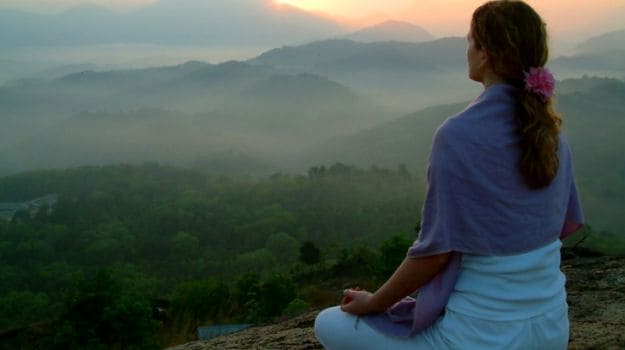
Study published in the Journal Plos Genetics revealed that good height is not only restricted to physical advantages but it also linked to higher IQ’s and a more positive outlook towards life. Human height depends on a lot of genetic and non-genetic factors like environmental conditions and nutrition.
Yoga has been practiced for holistic well-being since time immemorial but you’ll be surprised to know that yoga can also be used to increase your height. With International Yoga Day (21st June) around the corner, we bring to you some tricks and tips to add those few extra inches to your height and boost overall body development. “Contrary to what most people believe, you may have a chance to increase your height till the age of 23-24 years after which the body stops secreting the growth hormone,” says Jitender Kunal Kaushik, Head Trainer at Blossom Yoga in New Delhi. He suggests the following yoga poses that may help in stretching your body muscles.
1. Tadasana
The exercise involves stretching all the body muscles from head to toe. This elongation generates posture pressure in all body parts which facilitates the production of the growth hormone.
– Stand erect on the floor with your legs, waist and neck aligned in a straight line. Keep both the feet together, hands on the sides and palm facing the thighs.
– While inhaling, raise both of your arms together in the upward direction, parallel to each other.
– Slowly lift your heels and stand on your toes. Stretch your body upward as far as possible. Keep your legs and arms straight.
2. Vriksh Asana
The tree pose works wonders in increasing height. When the leg is folded and placed over the other thigh, the entire weight is borne by the second leg. This helps in strengthening your muscles. Further, when the neck is flexed upwards, the pituitary gland (responsible for producing the growth hormone) gets activated.
– Stand with feet together on the floor. Keep hands at the side and breathe normally.
– Stand up firmly on the left leg and fold the right leg at your knees. Bring the sole of the right foot on the inner thighs.
– Balance on the left foot and raise both arms over the head, elbows unbent and join your palms together.
– Hold this posture with the entire body stretched for a few seconds while breathing gently. Repeat the procedure with the opposite leg.
3. Sarvang Asana and Head stand
Together referred to as Shirshasana, both the poses involve inversion against gravity. This exerts direct pressure on the pituitary gland.
– Lie flat on the back in shavasana with your palms facing downward.
– Slowly lift your legs, buttock and back so that you come up high on your shoulders, support the back with hands.
– Keep straightening the legs and spine. Your weight should be supported on your shoulders and upper arms.
– If you feel any strain in the neck come out of the posture. Stay in the posture 15 to 30 seconds.
4. Ustra Asana
Also known as the Camel Pose, it involves the backward bending of the neck which triggers the master (pituitary) gland. People who suffer from fluctuating blood pressure or have back injuries should avoid this pose.
– Sit in vajrasana (kneel on the yoga mat). Stand on your knees as you inhale. Draw in your tail bone towards the pub, as if being pulled from the navel.
– Keep your back arched and arms straight, sliding your palms over your feet.
– Stay in this posture for a few seconds, breathing normally.
– Breathe out and slowly come back to the initial pose.
[“source=indianexpress”]
